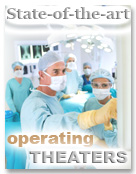
- RP Specialized in:
- Plastic Surgery in Argentina
- Treatments
- Breast Implant Surgery
- Rhinoplasty
- Vaser® Lipo System
- Liposuction
- Eyelid Surgery
- Tummy Tuck
- Breast Lift
- Facelift
- Lifting the Tip of the Nose
- Breast Reduction
- Double Chin Surgery
- Eye Shaping Surgery
- Chin Augmentation
- Ear Surgery
- Mentoplasty
- Eyebrow Lift
- Mini Facelift
- Cantopexy
- Deep Chemical Peel - Resurfacing
- Plastic Surgery Information
- Plastic Surgery Costs
- Cosmetic Procedures
- Hair Transplant
- Dermatology
- Phlebology
- Related information
- Related Links
- Web Directories
- Free Quotation
- Webmaster
» What is a liposculpture?
Rodriguez Palacios® Medical Center Library - Plastic Surgery
By RP Doctors
All rights reserved
Many people wish to improve their figure. Current fashion trends impose slim bodies as the standard to follow, athletic figures with proportionate, sexy curves. For that reason, it is important to have realistic expectations of what a Liposculpture can achieve. This procedure can improve your appearance, but it will not in any case make other people treat you differently, or make you happier or better accepted into a group, and it will not magically transform your body into an ideal silhouette. Before choosing to undergo surgery, the patient should carefully think about his/her expectations and talk about them with the surgeon.
How can you achieve the desired figure?
Diets, physical activity and the aid of technology or medicine can improve your body shape. The strong demand of people looking for quick solutions with the least possible sacrifice to achieve the ideal figure leads to the excessive advertising of countless methods to lose weight and improve your figure. Many magical promises are made, new technologies with unclear results are offered, all of these try to stand out from the rest and make a difference under a pretense to achieve the best results in the simplest, seemingly harmless fashion. Sometimes, these pretenses not only fail to honor the promise but also deceive the public and make people suffer through procedures which may even entail health risks.
What is a liposculpture?
It might be the most effective medical procedure to model the body. Liposculpture is a surgical procedure by which long hollow cannulae of various diameters are introduced through small cuts or incisions on the skin (of less than 1 cm) and fat located under the skin is sucked out of the body by means of negative pressure or vacuum. The required negative pressure is achieved with a pump or engine (Lipo-aspirator) or by manually generating negative pressure by special clamps in special syringes.
Subdermally, between the skin and the muscle, there is a layer of subcutaneous fat tissue basically consisting of cells called adipocytes which are intermingled in a net of lymphatic and blood vessels and nervous threads, among other elements. The number of these cells is determined since birth, according to genetic inheritance and the individual’s hormone pattern. An increase in the volume of adipocytes is associated with an excess of nutrients ingested by people. Such excess of nutrients is deposited in the form of fat inside adipocytes. When a liposuction is performed, part of this tissue is removed and this layer of fat tissue gets thinner. Making this subcutaneous fatty layer thinner enables in many cases to see the underlying muscle anatomy.
With this procedure, any areas of the body where fat accumulates can be modeled. The skin should have enough elasticity to adapt to the new volume underneath.
Pain during the post-operative stage is considered to be mild to moderate. Wearing an elastic garment for a few weeks is generally recommended so as to achieve a better containment of inflammation and adaptation of the skin to the new silhouette. Results become visible after inflammation is absorbed, usually from the second week of the post-operative stage up to the second month.
The procedure described above, developed and used since the 1970s, has been perfected over time.
Thus, at the beginning, the cannulae were thick, with diameters ranging from 5 to 10 mm. It was very difficult to achieve uniform results without leaving irregularities in the panniculus adiposus, and these were seen through the skin. In the mid 1980s, Dr. Jeffrey Klein introduced wet liposuction. This procedure involves injecting abundant liquid in the area to be treated before the suction is performed. Dr. Klein’s formula was highly used by nearly every surgeon, and contains several components, including physiological saline solution, adrenaline, anesthesia, and bicarbonate. The advantage consists in a lower loss of blood when fat is removed - achieved thanks to the vasoconstriction triggered by adrenaline, - a higher ability to remove fat, and reduced ecchymosis (bruising) during the post-operative stage, which contributes to mitigating pain in the area. Cannulae have become gradually smaller in diameter; those used at present are quite fine, ranging from 2 to 4 mm, which allows for more uniform results.
Sometimes, hearing the term LIPOSCULPTURE may be misleading. It refers to the “sculpting” of body fat and consists in the method explained above, although some surgeons refer to liposculpture when, in addition to removing fat from bulky areas, the patient's removed fat is used to fill hollow or sunken areas, a method also known as “lipograft” (fat graft or lipotransfer).
In recent years, special devices have been conceived to improve results or facilitate the surgeon's work. Ultrasound-assisted liposuction reached its peak by the end of the 1980s. This liposuction device generates heat through ultrasound vibrations of the cannula. Heat causes fat to melt before being removed. Ultrasound vibrations break up the walls of the fat cells (adipocytes) and fat emulsifies (liquefaction or melting of fat), so subsequent becomes easier. All the devices invented later, basically through laser or ultrasound techniques, generate heat and cause fat to melt away in order to be later removed.
In time, Ultrasound Liposuction was perfected. The third generation of ultrasound liposuction devices gave birth to the term Liposelection, a new method which allows fat removal while minimizing damages to the remaining constituents of the fatty layer - lymphatic and blood vessels, and nerves.
Regardless of whether the liposuction method involves the use of traditional or ultrasound techniques, there are no functional side effects in the long term with respect to the damage to non-fatty elements of the panniculus to be treated.
What are the advantages of this liposuction method for the patient?
In some patients and in certain areas, this procedure allows an easier removal of fat and reduced loss of blood. Sometimes, a better removal or adaptation of the skin to the new shape of the subcutaneous adipose tissue is achieved thanks to the contraction caused by heat.
It should be noted that anesthesia is the same as in any other liposuction procedure, surgical periods are the same, or even longer with respect to ultrasound-assisted or laser liposuction; the post-operative stage is equally or slightly longer, until the final results can be observed. Pain or discomfort during the post-operative stage are the same in both kinds of procedures.
There is a common misconception by obese or overweight patients who consult plastic surgeons in the hope of undergoing liposuction procedures. Tired of trying countless diets which they cannot follow, they decide to undergo surgery in order to resolve the odyssey of not achieving the desired body. They believe liposuction is the simplest way because, after leaving the OR, they will have their long-yearned figure by miracle. As surgeons, we are under a duty to clarify several issues which should be given special consideration:
- The more fat is removed, the more blood will be lost along with the fat. Any volume in excess of 3 to 4 liters of removed fat involve an increased risk of suffering post-operative complications. If you are planning a large fat removal, it is advisable to schedule a self-blood transfusion in order to avoid blood bank transfusions.
- There are higher risks of seroma forming in the area. Seroma is an accumulation of serous liquid with blood in certain liposucted areas, which makes it necessary to undergo lengthy medical treatment, thus extending the post-operative recovery stage.
- Surgery and anesthesia take longer, with the relevant implications.
- There are higher anesthetic risks associated with obesity itself.
- There is a higher risk of pulmonary thromboembolism.
Liposuction is not recommended as a method to lose weight or to finish losing weight. The very name is self-explanatory; this procedure is used to sculpt, to “shape” the body. This surgical procedure is useful for modeling the body and removing localized fat which cannot be eliminated by means of diet and physical activity (that is, resistant to traditional weight loss mechanisms). It is essential that any patient who is to undergo liposuction subsequently keep weight within appropriate levels because, if the patient starts to eat in excess again, fat is rapidly recovered and any results obtained are lost. If the patient regains weight, this circumstance is experienced in a more proportionate manner, as the shape modeled with the surgery is maintained.
Obese patients, and those who tried and failed at following diets, should first consult with experts on the subject in order to treat their condition or disease, which involves a health issue above all. At present there are multidisciplinary teams devoted to treating obesity which, insofar as the matter involves biological, psychological and social problems, is an extremely complex issue whose source is a combination of genetic, psychological, behavioral, and cultural factors, among others. Sometimes obesity is a symptom that may be associated to a baseline psychological disorder which should be treated beforehand.
In conclusion, it may be said that liposuction or liposculpture is a very effective surgical procedure to model the figure. This medical act should not be disregarded, for a bad planning or performance under inadequate conditions might lead to disastrous consequences. Not every person can be deemed fit to undergo this kind of surgery.
The ideal patient is an individual with a slight overweight, with good elasticity on the skin and with localized adipose fat in certain areas of the body, where it is not necessary to remove more than 3 liters of fat. Such patients should be persistent and determined to keep their weight.









